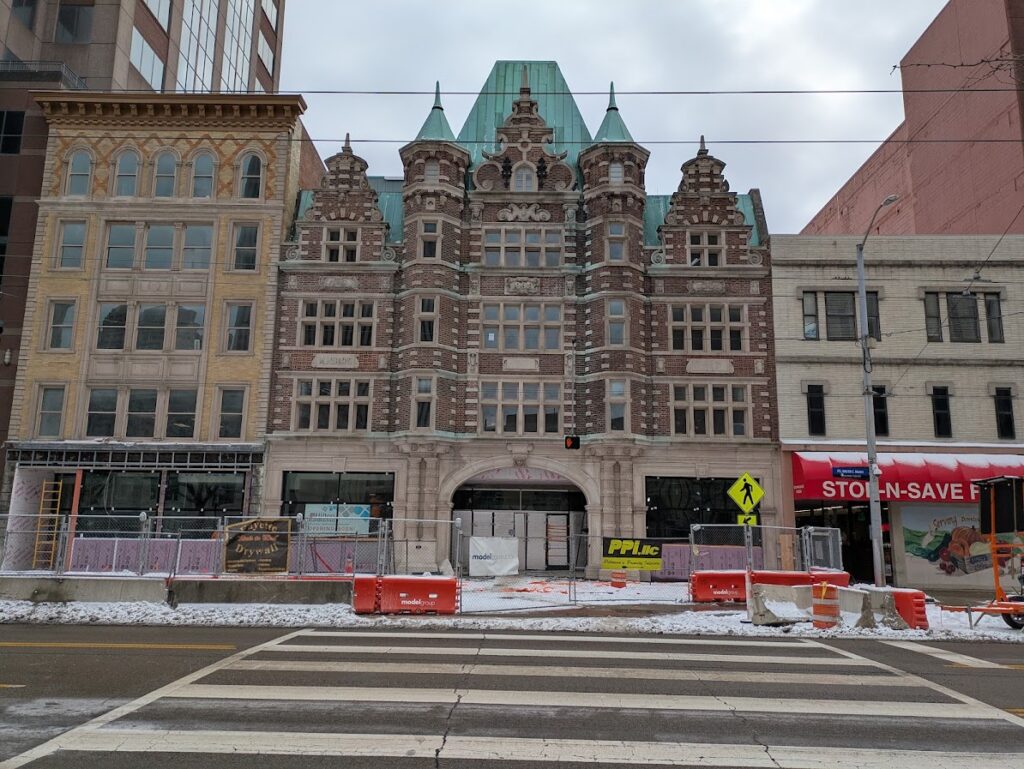
The second phase of the Dayton Arcade (the North half of the complex) is looking closer to completion. These photos were taken in late February, 2025.
Pictured above are the Third Street Building (in the middle) with its iconic Flemish-style façade and the Gibbons Annex next to it (on the left).
These buildings will house a 93-room Hilton Garden Inn hotel on the upper floors while the entrance on the first floor of the Third Street Building will feature retail spaces for small local businesses lining the corridor that gives the Arcade its name.
Dave Williams of Cross Street Partners said that “It’s going to be really our only retail hub in the downtown core. It’s our opportunity to really bring back the craft retail, which is sort of emerging now.”
The Third Street Building entrance will also connect to the central rotunda and continue all the way through to Fourth Street.
The hotel is slated to open in just a couple months later this spring.
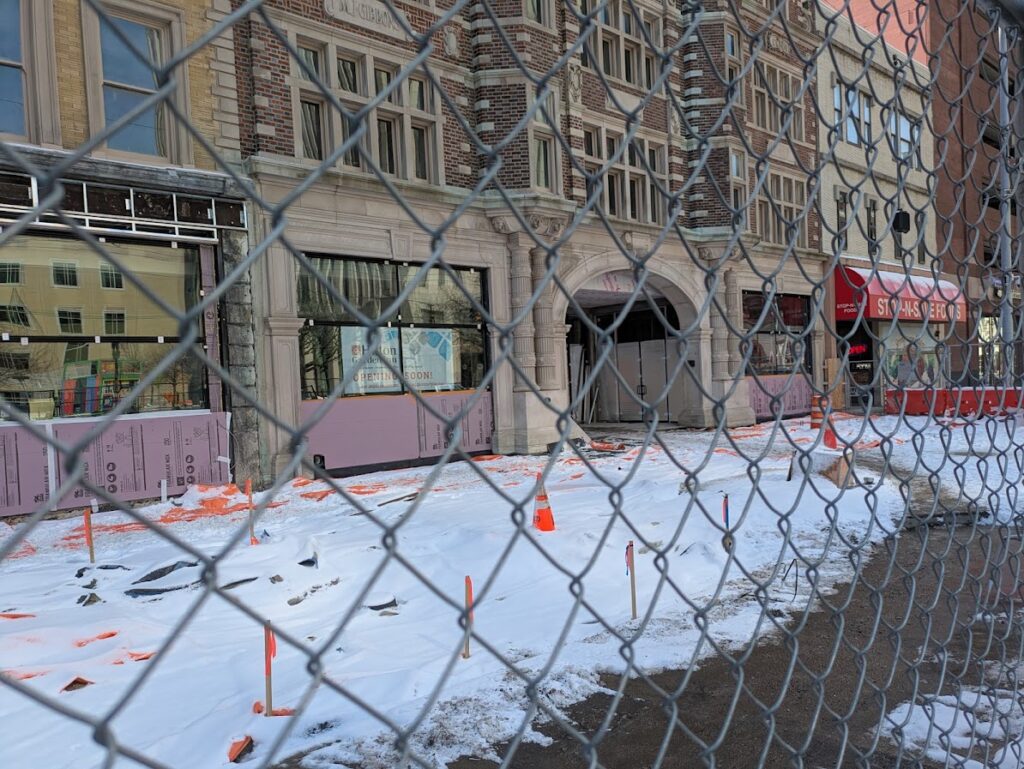
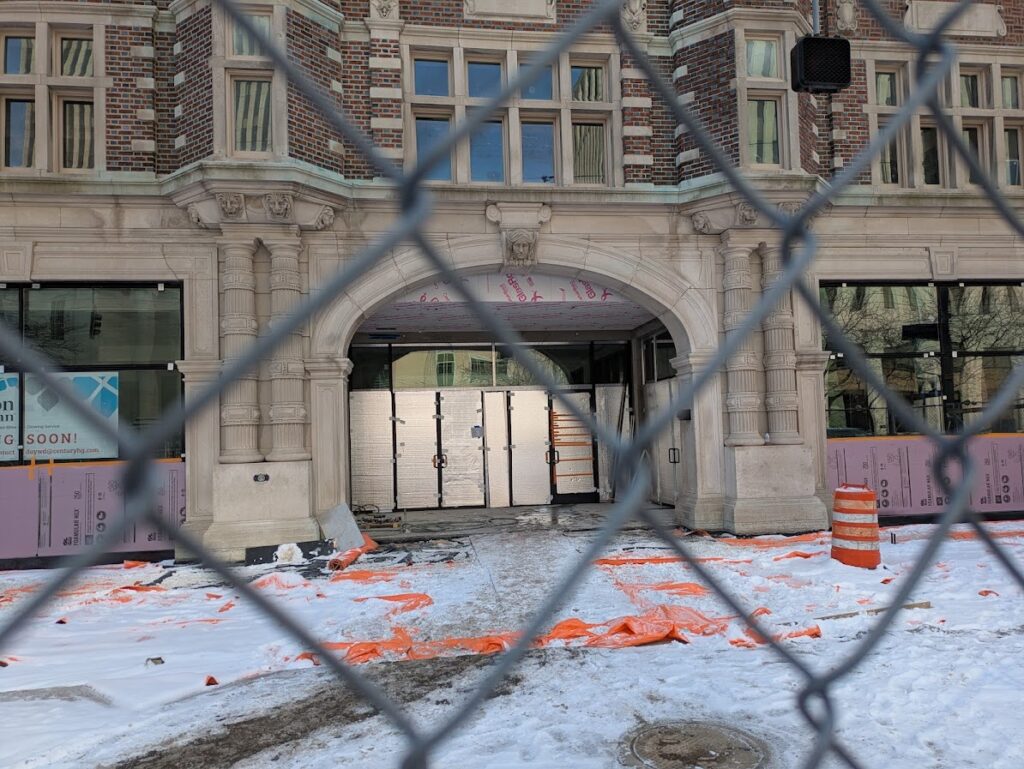
I also posted a quick video tour of the North Arcade coming from the rotunda a couple of months ago:
@daytonvistas A look inside the Dayton Arcade rotunda, as well as a sneak peek at the progress of the North Arcade, where redevelopment including small retail shops and a hotel are slated to open soon. #daytonarcade #daytonohio #historicarchitecture #historicbuildings #adaptivereuse #historicpreservation ♬ original sound – Dayton Vistas
My original article from June 10, 2023 when the second phase got underway:
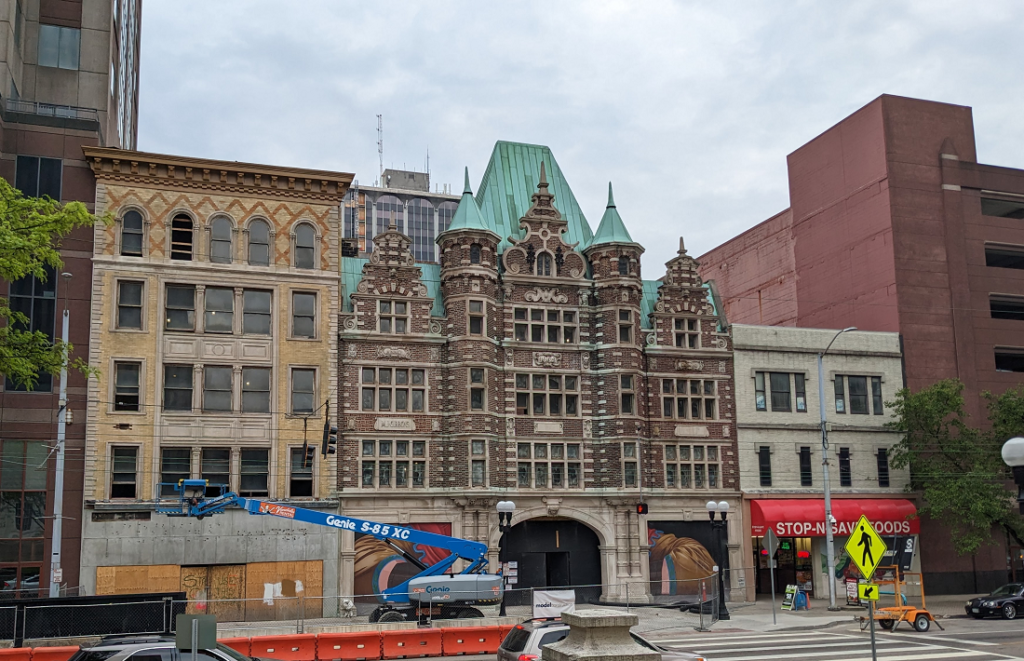
About 5 years ago I wrote a series of articles about the Dayton Arcade redevelopment that was then just a proposal. First announced in 2016, it undoubtedly had the potential to be a transformative project for the region, but it would endure a circuitous route to the finish line (which I recapped in a Dayton Arcade timeline here).
It certainly should be no surprise that a $95 million redevelopment spanning a whole city block of deteriorating buildings vacant for decades would run into some hiccups and delays. But the wait was still excruciating for Daytonians who had been burned by past promises of rehabbing the complex that ultimately went nowhere.
And despite the delays, the current development team had all the tools needed to make an Arcade redevelopment a reality, and the financial closing finally happened on April 25, 2019, meaning the project had the green light.
The Arcade officially reopened in March 2021.
Now in 2023 the Arcade has closed on the financing for its second phase, and although this too was a lengthy and complicated process, it’s telling that there just wasn’t the same feeling of uncertainty and doubt that permeated the lead-up to the first phase.
This should be a testament to the positive momentum and “catalytic” potential of the Arcade’s first phase as well as other projects in downtown Dayton that are making the city core an even more viable investment. And this all comes even as continuing remote work has led to the shuttering of downtown mainstays like Carmen’s Deli and Boston Stoker.
The second phase of the Arcade is a $41 million project and comprises the North Arcade, including the Third Street Building and adjacent Gibbons Annex, as well as the actual “arcade” that leads from Third Street to the central rotunda before continuing on to Fourth Street.
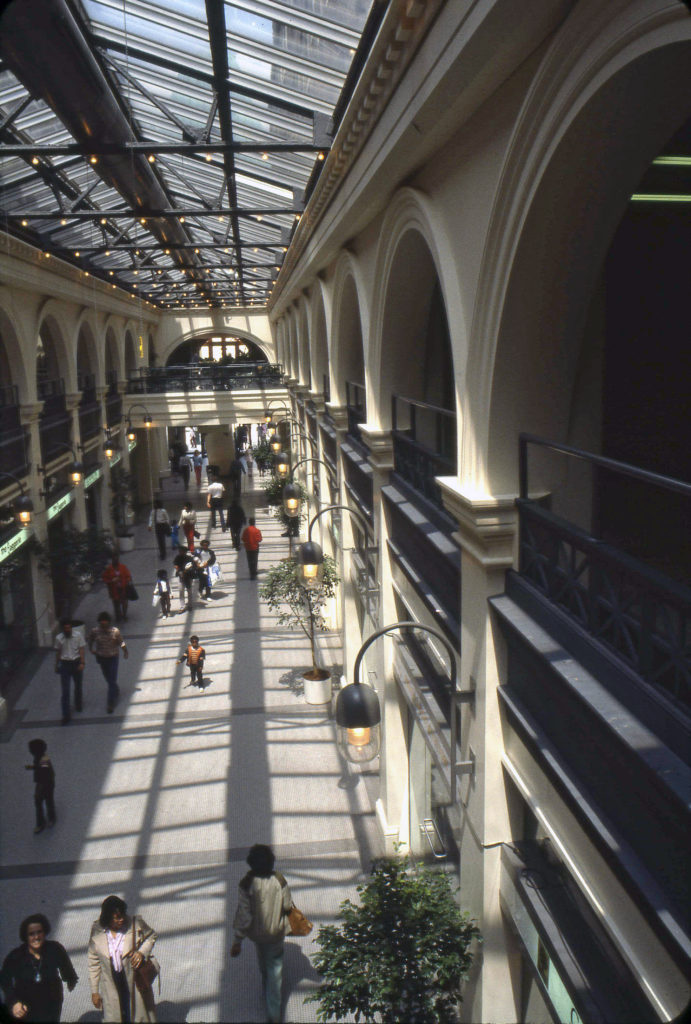
The Third Street Building has the most iconic facade of the whole complex, which is Flemish in style and was reportedly patterned after a guildhall in Amsterdam.
The Gibbons Annex is the five-story building immediately to its left in the postcard below:
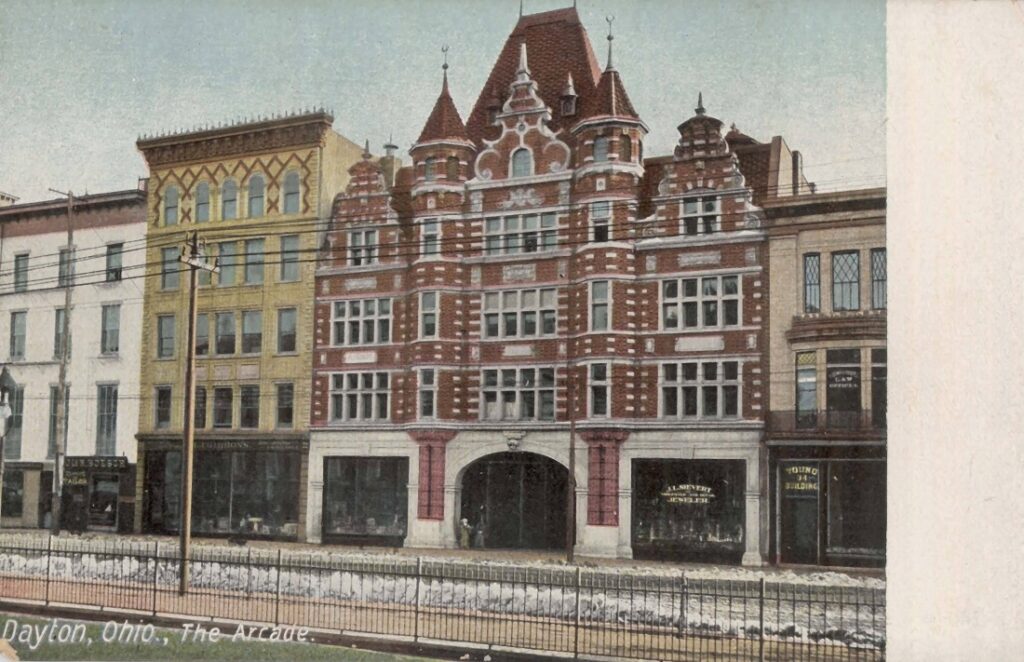
These spaces will house a 94-room Hilton Garden Inn hotel and storefronts for up to 15 local businesses.
The small-scale retail is an important part of the development. Some Daytonians nostalgic for the Arcade’s shopping center past shared some disappointment that the the first phase focused on apartments, offices and private event space in the rotunda, which didn’t give them many opportunities to visit and shop aside from periodic market days.
But these anchor tenants and event bookings are crucial for the long-term sustainability of the complex. In the early 1980s, on the other hand, the renovated rotunda food court was a major success but that was not enough and the complex shuttered again completely a decade later.
A representative for the hotel group has said that “this felt like a great opportunity to preserve and revitalize an iconic area and remove some of the roadblocks that have previously reduced travel to downtown Dayton.”
And Dave Williams, vice president of Development for Cross Street Partners, the main Arcade developer, has spoken about the reactivation of the “arcade” pathway connecting Third and Fourth Streets: “It will be that concourse that was originally designed in the Arcade in 1902 (that was) completely altered in 1980, when they actually shifted it to the center of the rotunda,” said. “We’ve brought it back to where it does become that major marketplace, that entertainment place.”
And to help make the whole complex even more vibrant, multiple new Arcade restaurants will be opening soon in the South Arcade and filling key corner commercial spaces.
To learn more about the history of the Dayton Arcade, there’s a detailed chapter in my book Lost Dayton Ohio.


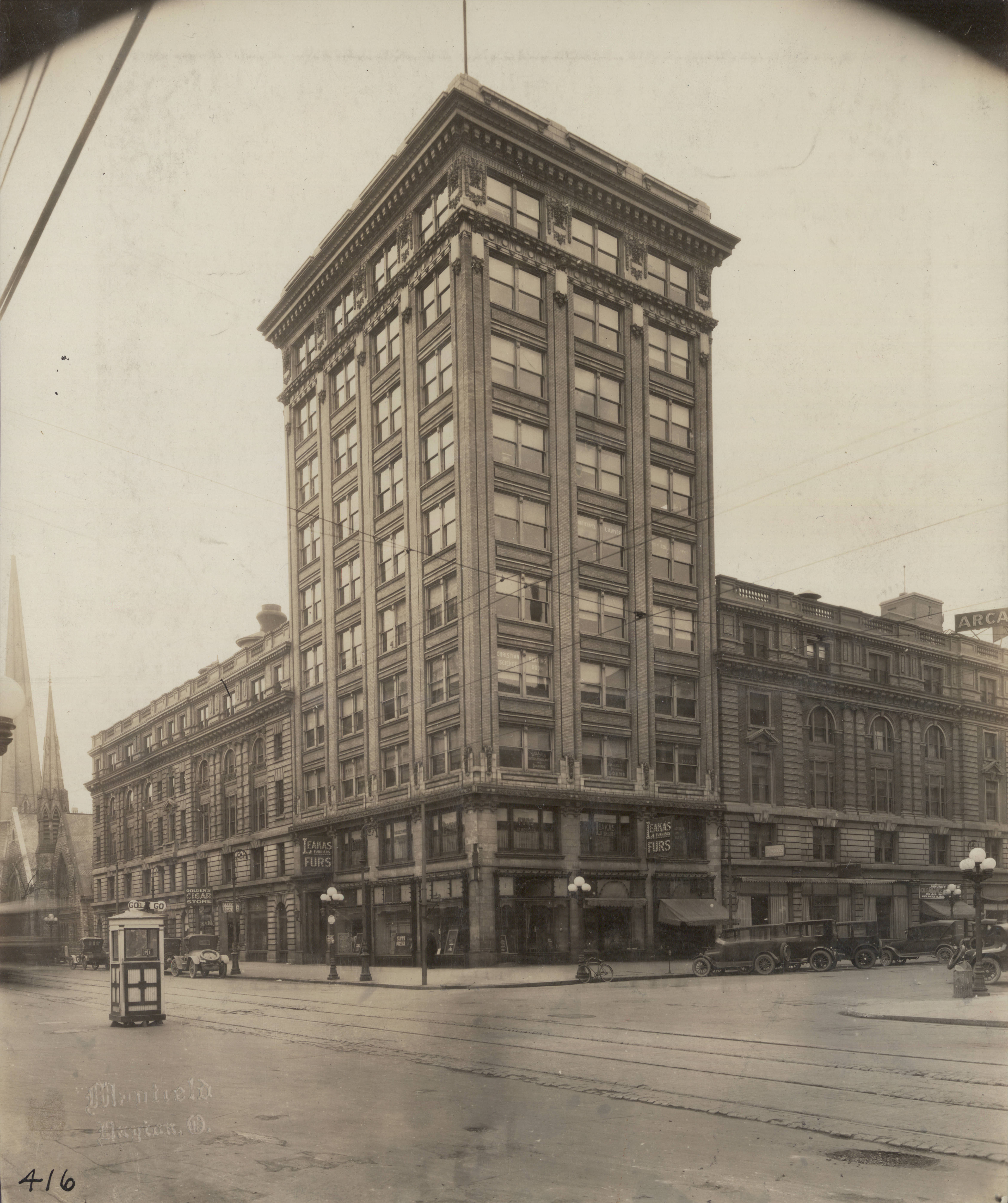

Leave a Reply